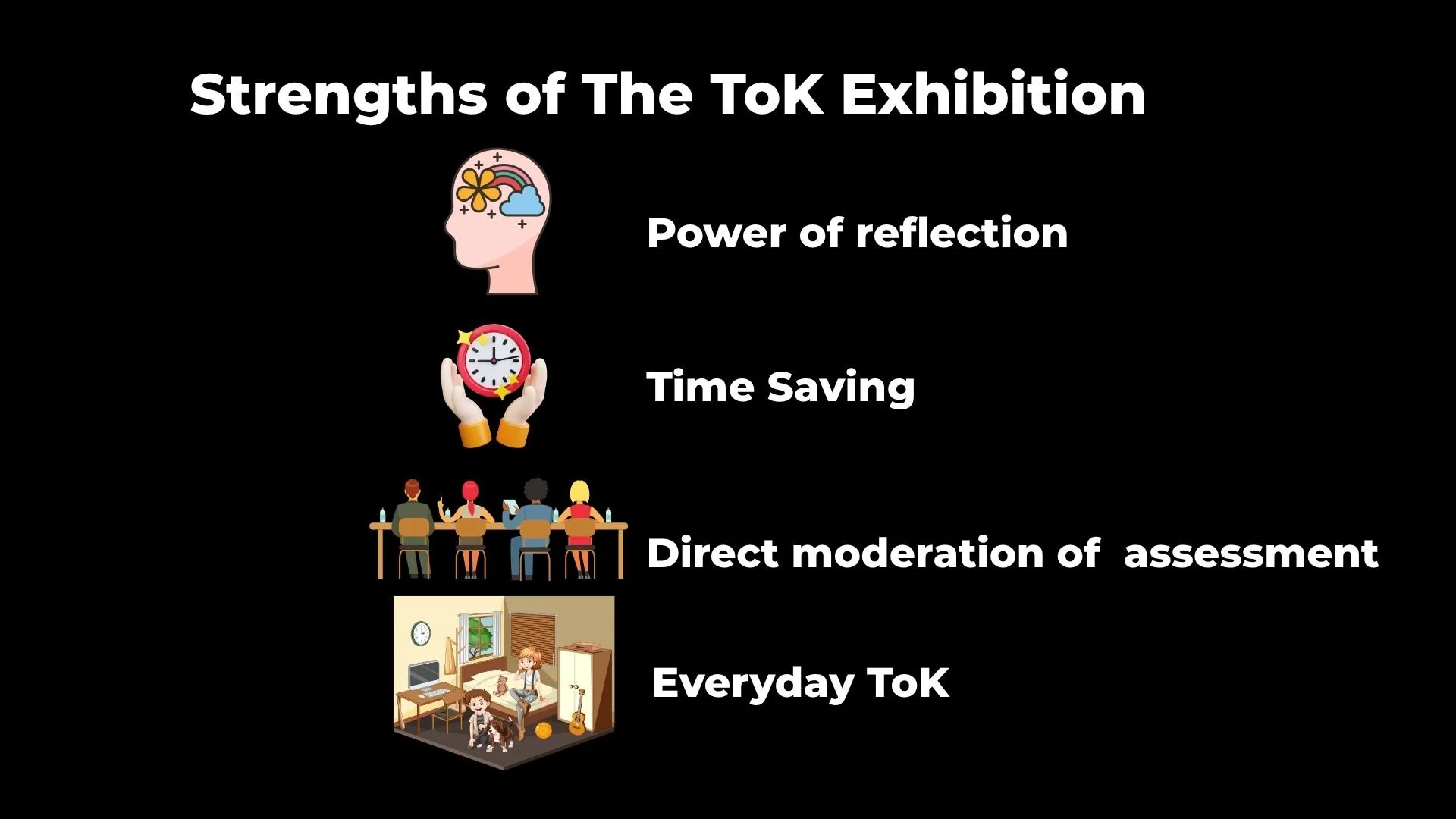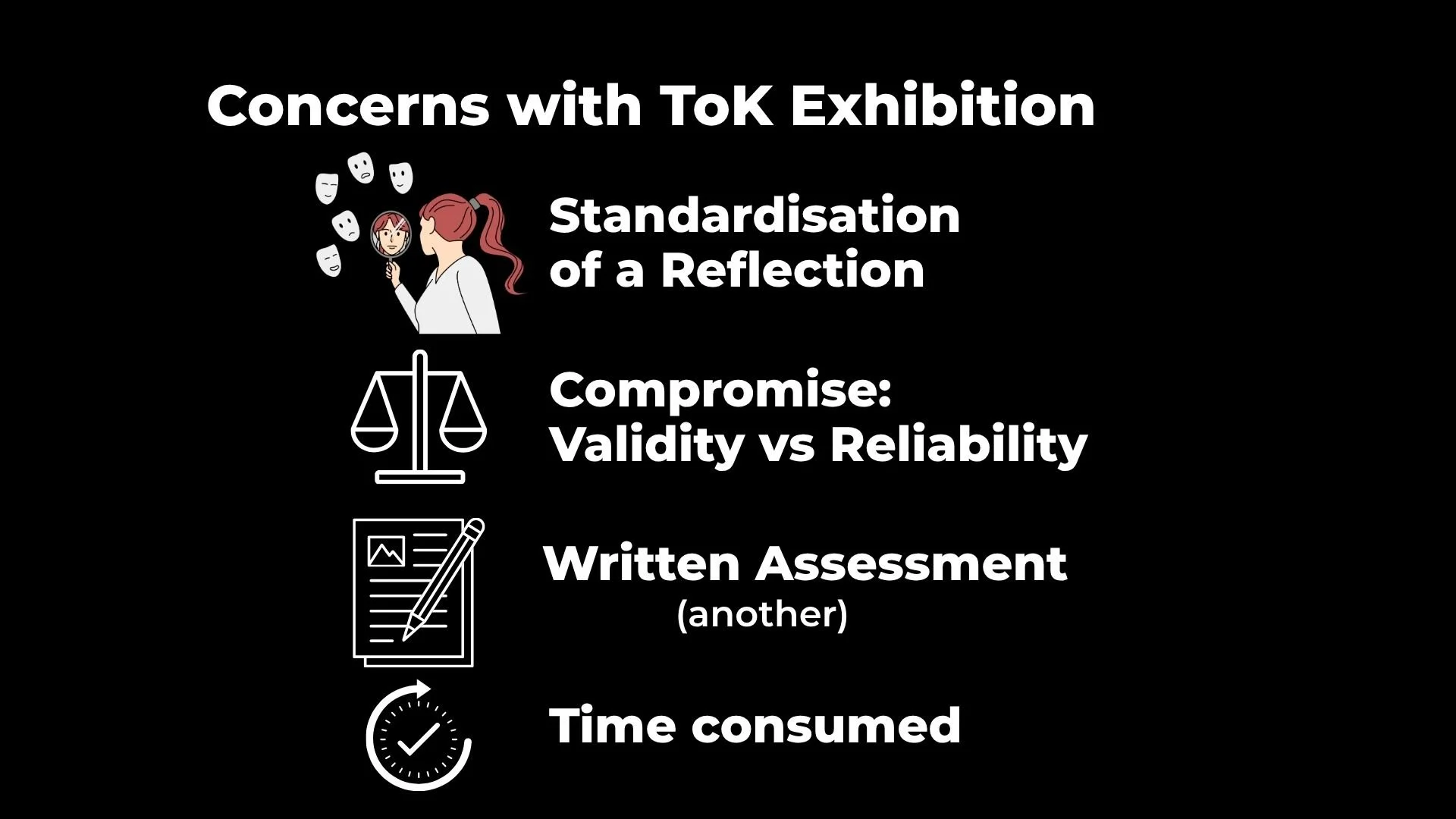We need to talk about tok exhibition
The IB Theory of Knowledge (ToK) curriculum is currently undergoing review, with a new version due in the coming years. Decisions about what stays, what changes, and what disappears altogether will be made by the Curriculum Review Group (a group of very wise individuals to which, alas, I do not belong). But in the spirit of open educational discussion, and with the hope that those outside the group might contribute meaningfully to the future of ToK, I think we need to talk about the ToK Exhibition.
Over the past five years, I’ve worked with many students from across the globe on their ToK Exhibitions. I’ve read hundreds of exhibition commentaries, from dozens of IB schools, in a wide range of cultural and educational contexts. This has given me a fairly representative view of both the strengths and the challenges of the Exhibition assessment. In this blog post, I’ll explore what works, what doesn’t, and how we might move towards a more effective model in the next iteration of the ToK curriculum.
Strengths of the ToK Exhibition.
Let’s start with the logistical strengths. One of the key improvements of the Exhibition over its predecessor (the ToK Presentation) is its efficiency. The old Presentation assessment, whilst rich in many ways, was incredibly time-consuming. Presentations had to be individually viewed, often consuming weeks of valuable classroom time. By contrast, the Exhibition allows all students to present and attend simultaneously, compressing the process into a few hours. In theory, at least.
Another improvement is the moderation model. Under the old system, IB moderated the teacher’s rationale for awarding marks. Now, IB moderates the student’s actual work. This is a more direct form of assessment and should, in theory, reduce subjectivity. Again, that’s the theory—we’ll revisit this shortly.
Cognitively and epistemologically, the ToK Exhibition has a compelling strength: its capacity to embed ToK in the everyday. It encourages students to recognise the knowledge questions that arise from the objects and experiences in their daily lives. This grounding of epistemology in the mundane and personal is one of the most powerful aspects of the current assessment. It allows students to explore how knowledge lives not just in textbooks or abstract debates, but in phones, shoes, photographs and passports. ToK becomes something lived and observed, rather than merely theorised.
Concerns with the ToK Exhibition.
The central concern with the Exhibition, from which most others flow, is this: the Exhibition attempts to standardise reflection. And that’s a problem. Reflection is central to learning, but it’s also deeply personal and subjective. As soon as we assign marks to it, we invite comparison, ranking, and a kind of mechanical structure that can undermine its authenticity. If a student is awarded more points for their reflection than another, we imply that one reflection is ‘better’—but by what criteria? And in order to make these judgements, we inevitably begin to standardise the reflection.
This leads to the erosion of the original reflective impulse. Students, quite naturally, begin asking how to “score higher” on their reflections. Teachers, parents, and school administrators begin asking how to ensure those scores are achieved. Reflection is no longer a self-directed enquiry, but a task with criteria and structure. Drafts are revised with comments like “this object is fine, but it would be better if…” or “have you considered another interpretation?”. Bit by bit, the personal becomes procedural.
And so, the ToK Exhibition becomes a piece of structured writing—not an exhibition of real-world objects infused with student insight, but a 950-word commentary designed to fulfil a function. The objects themselves often become secondary. We are, effectively, assessing writing skills again. That brings us to a further concern: both ToK assessments are now written. The Exhibition has replaced a multi-modal, potentially performative Presentation with another piece of structured writing. Students with strong written communication skills are now doubly advantaged, regardless of the breadth or depth of their ToK thinking.
Another issue is time. Ironically, although the Exhibition was intended to be more time-efficient, many teachers report that it is consuming a disproportionate amount of classroom time. Because authentic reflection must be squeezed into a rigid format, we end up teaching the format. Reflection becomes a rehearsed exercise. This diverts time away from open-ended, enquiry-driven exploration—the kind of teaching ToK was designed to promote.
So where do we go from here? How do we keep the strengths of the Exhibition—its real-world grounding, its emphasis on reflection—while avoiding these pitfalls?
Proposal to develop the ToK Exhibition.
My proposal is to replace the Exhibition commentary with a ToK Learning Portfolio. Portfolios are already suggested in the ToK Guide as a tool for formative reflection; the only change would be to make the portfolio the summative assessment for the first year of the course. This would mirror the CAS model. Students would build their portfolios throughout the year, reflecting on their ToK learning, drawing connections to other DP subjects, and integrating personal experiences. They could include a mix of media: written reflections, videos, photos, or documentation from other subjects. This would make the assessment multi-modal and less reliant on written ability.
The portfolio would be assessed by the ToK teacher, using a rubric focused on indicators of ToK learning: intellectual development over time, integration with other subjects, personal relevance, and conceptual understanding. The emphasis would be on growth and synthesis, rather than meeting a rigid structure.
Of course, moderation is the challenge. Portfolios are harder to standardise than a single written commentary. But if we overvalue reliability, we risk sacrificing the soul of the course. ToK is not just about earning points—it’s about cultivating reflective, critical, and interdisciplinary thinkers. Validity, in this context, must take priority.
Perhaps, like CAS, the portfolio could be pass/fail—but that would shift the full weight of assessment onto the Essay, once again favouring students with advanced writing skills. Instead, a moderated assessment model could be introduced, with optional IB-run workshops to help teachers align their internal marking. I’d be happy to help develop such a workshop, if IB is interested.
Ultimately, the Exhibition as it currently stands is a well-intentioned compromise. But we can do better. We can create an assessment that is valid, reflective, inclusive, and meaningful—one that serves learning, rather than constraining it.
I’d love to hear your thoughts. If you’re a ToK teacher or coordinator, feel free to share your ideas in the comments or by emailing me at Daniel@ToKToday.com. If we gather enough responses, I’ll compile them into a submission for the Curriculum Review Group—because ToK should be as collaborative and dynamic as the knowledge it explores.
Thanks for reading. And, as always, enjoy teaching this remarkable course.
Daniel, Lisbon, July 2025





